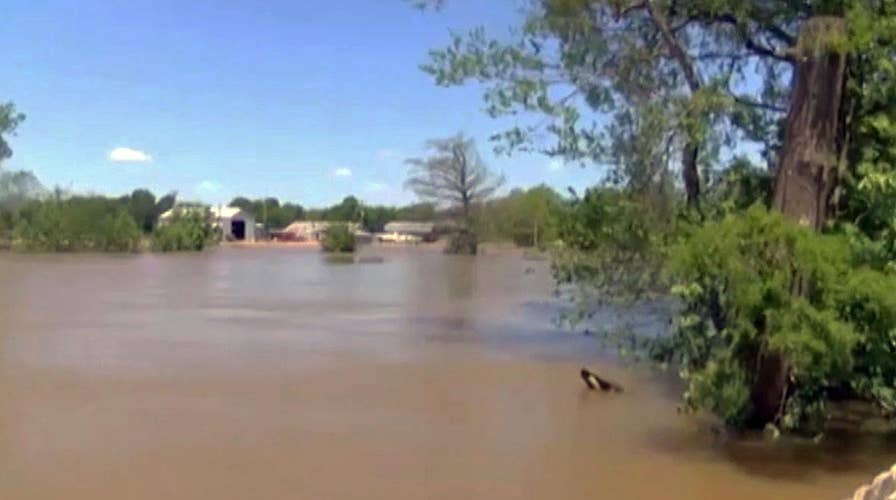Arkansas governor asks for federal aid after severe floods
Governor Asa Hutchinson of Arkansas has requested expedited federal assistance after historic flooding that caused the deaths of nine people and nearly $21 million in damages
The flooding that's destroyed homes and devastated communities in parts of the Midwest has cost the state of Arkansas $21 million, as Gov. Asa Hutchinson says he's working to expedite federal assistance to people and businesses in the flood zone.
Total damage costs were expected to grow and did not include losses for farmers, Hutchinson said.
On Sunday the governor toured disaster areas by helicopter along with state and federal officials including Agriculture Secretary Sonny Perdue and members of the Arkansas congressional delegation.
Nine people died as a result of the floods last week. As the water begins to recede from hard hit areas such as Pocahontas, Ark., a significant portion of the state’s farmland downriver is being affected.
“Northeast Arkansas crops and farmland have been impacted tremendously by the heavy rains and flooding in the region over the last week, and today’s tour with Secretary Perdue and Arkansas’ federal delegation provided a close look at the damage,” Hutchinson said in a statement following a flyover of the disaster area on Sunday.
LIGHTNING BOLT KILLS WOMAN AND HER HORSE
Secretary Perdue traveled to the region at the request of President Trump. He offered to help the state’s farmers by promising to bring speedy assistance. The Federal Emergency Management Agency has also committed to sending a team to the hard hit state this week.
“I want your farmers in Arkansas to know that the resources of the U.S. Department of Agriculture will be at their disposal,” Perdue said. “Our people are already on the ground with the FSA (Farm Service Agency).”
DOZENS FORCED TO EVACUATE AS GEORGIA WILDFIRE SPREADS
Farming is the largest economic driver in Arkansas adding nearly $16 billon to the state’s economy each year. The Natural State is also the leading producer of rice in the country. Other major crops include soybeans and wheat, according to the Farm Bureau of Arkansas.
Jim Belles, a meteorologist with the National Weather Service says he expects conditions to improve but says the region may not dry out until next week or later.
“We’re seeing indications of slow fall now,” Belles said. “That trend fortunately is expected to continue but they’re still going to be dealing with flooding and fighting those impacts this week.”
Belles also notes that rain is expected later in the week but the expected totals are not likely to cause another round of flooding.
The Associated Press contributed to this report.


